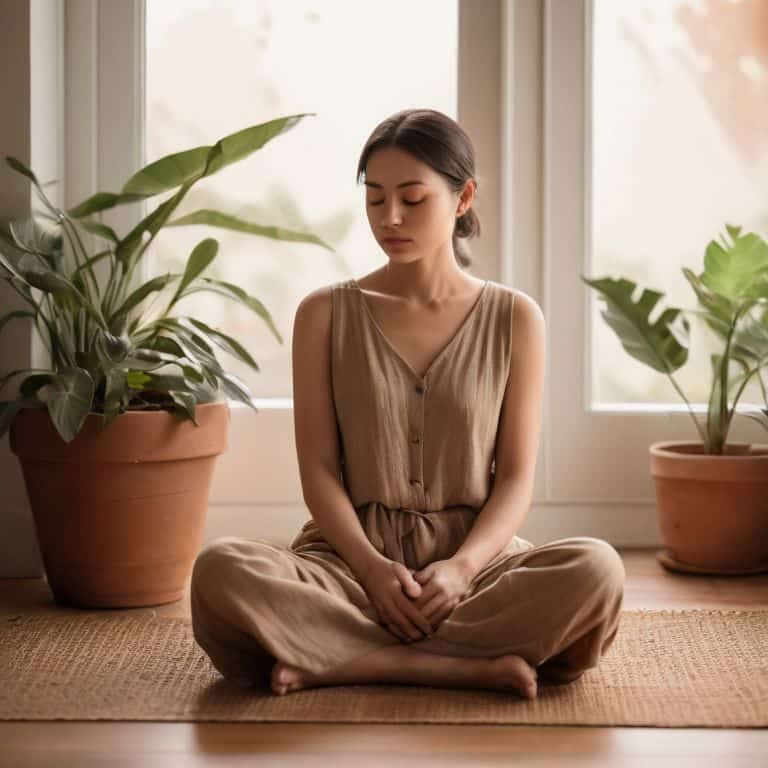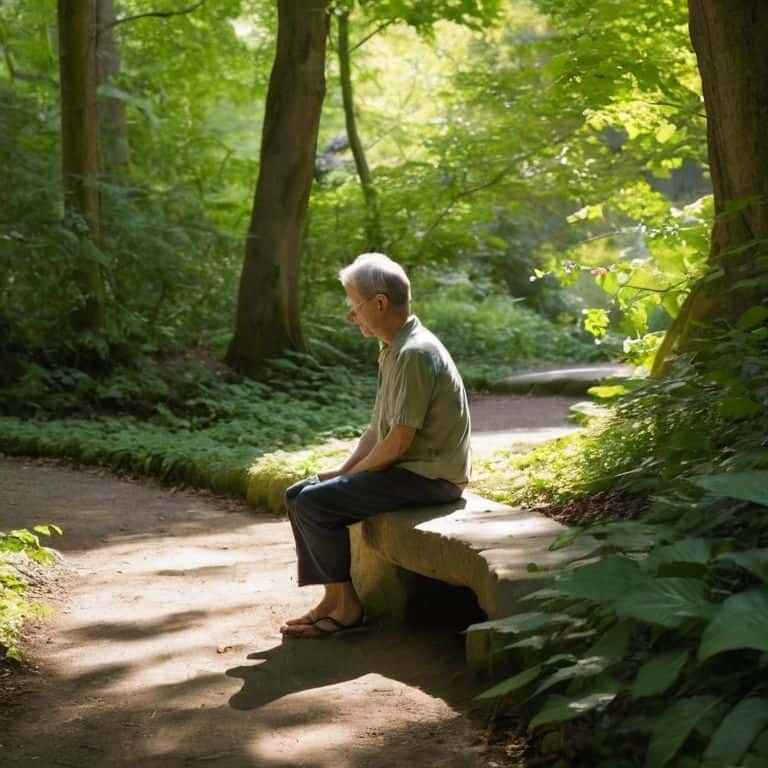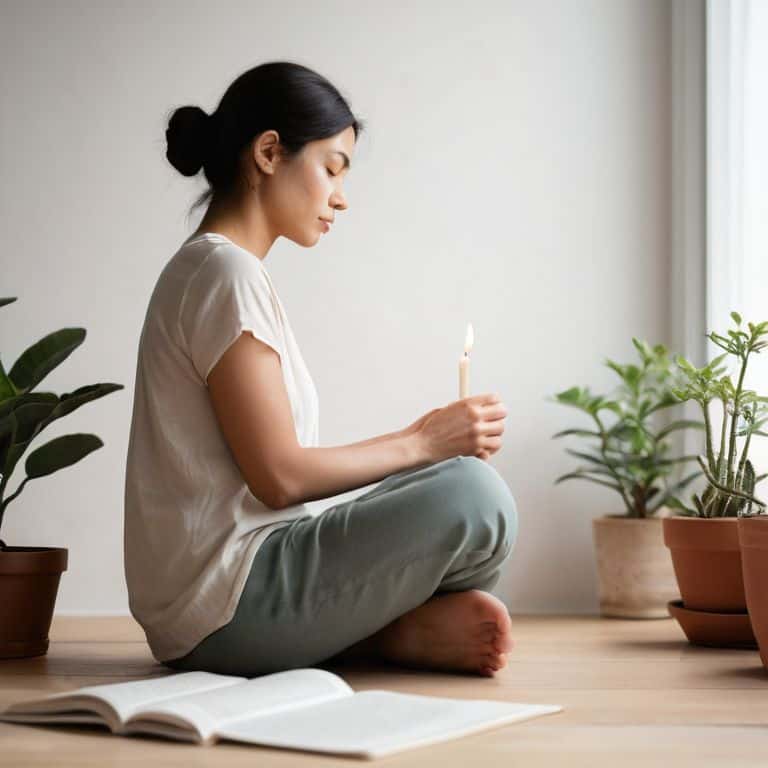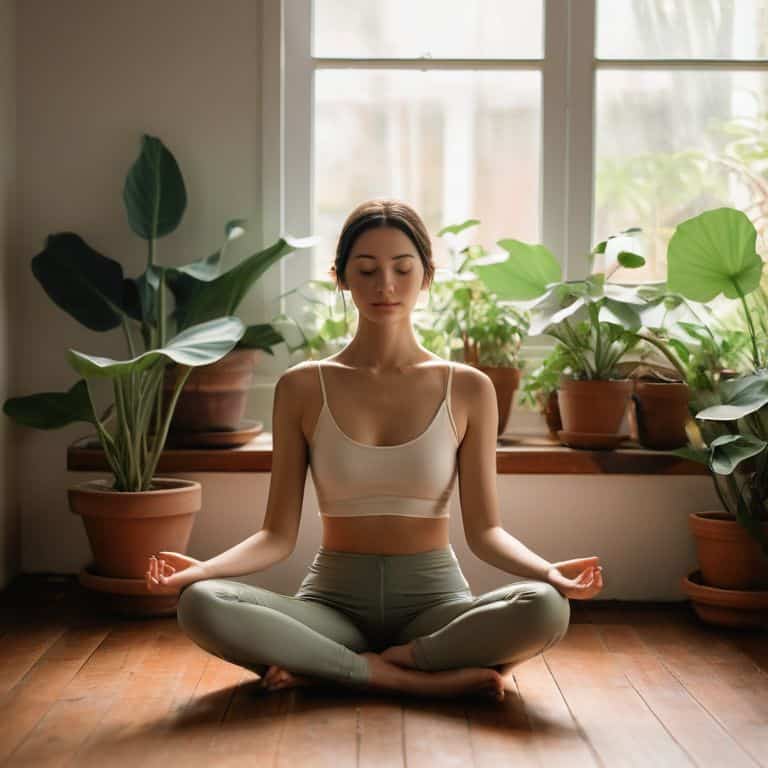Take a deep breath in, and as you exhale, allow your eyes to gently focus on these words. I still remember my first attempt at meditation – I was a stressed-out corporate lawyer, searching for a way to calm my racing mind. I thought meditation was about achieving a completely empty mind, but what I discovered was that it’s actually about gently returning to the present. If you’re looking to learn how to meditate for beginners, you’re likely to come across a plethora of advice, but I want to assure you that it’s simpler than you think.
As we embark on this journey together, I promise to offer you practical, no-nonsense guidance on how to establish a meditation practice that works for you. In this article, we’ll explore the basics of meditation, and I’ll share with you my personal experiences, as well as simple, step-by-step instructions to help you get started. You won’t find any fancy techniques or unrealistic expectations here – just honest, straightforward advice on how to cultivate a sense of calm and clarity in your daily life. So, let’s take another deep breath together, and begin this gentle journey into the world of meditation, one breath at a time.
Table of Contents
Guide Overview: What You'll Need

Total Time: 10 to 30 minutes
Estimated Cost: $0 – $20
Difficulty Level: Easy
Tools Required
- Comfortable cushion or chair (for sitting)
- Timer (optional)
- Guided meditation app or video (optional)
Supplies & Materials
- Quiet and peaceful space
- Water (for hydration)
- Journal (for reflection)
Step-by-Step Instructions
- 1. To begin, let’s start with a simple yet profound step: finding your anchor breath. Take a deep breath in through your nose, and as you exhale, feel the air move out of your body, allowing your shoulders to relax and your jaw to release. This breath will be your constant companion throughout your meditation journey.
- 2. Next, choose a quiet and comfortable spot to sit, either on a cushion on the floor, on a chair, or even on your bed. The key is to find a place where you can sit with your back straight, feeling supported and grounded, without any distractions. Take a moment to notice the sensation of your feet touching the ground, feeling the weight of your body distributed evenly.
- 3. Now, gently close your eyes and take a few more deep breaths, focusing on the sensation of the air moving in and out of your nostrils. As you inhale, imagine fresh energy entering your body, and as you exhale, envision any tension or stress leaving your body. Allow yourself to settle into the present moment, letting go of any thoughts or worries about the past or future, and simply focus on your breath.
- 4. As you sit, bring your attention to your posture, feeling the alignment of your head, neck, and spine. Imagine a string pulling your head up towards the ceiling, keeping your spine long and straight, and your body feeling open and relaxed. Take a deep breath in, and as you exhale, allow any areas of tension to release and soften.
- 5. Now, let’s explore the concept of a meditation object. This can be your breath, a mantra, or even a physical object in front of you. For beginners, the breath is often the most accessible and calming focal point. Bring your attention to the sensation of your breath moving in and out of your body, noticing the rise and fall of your chest or belly. When your mind wanders (and it will!), gently acknowledge the thought and return to your breath, without judgment or attachment.
- 6. As you continue to sit, you may start to notice physical sensations in your body, such as tingling, numbness, or relaxation. Allow these sensations to arise without trying to change or react to them. Instead, focus on your anchor breath, using it as a reminder to stay present and grounded. Remember, the goal of meditation isn’t to achieve a specific state, but to cultivate awareness and kindness towards yourself, just as you are.
- 7. Finally, when you’re ready to conclude your meditation, take a few deep breaths, and slowly open your eyes. Take a moment to notice how you’re feeling, noticing any changes in your body or mind. Remember that the benefits of meditation are not limited to the time you spend sitting, but can be carried with you throughout your day, as you move with greater ease and awareness. Take one final, deep breath in, and when you’re ready, slowly get up and go about your day, feeling more grounded, calm, and connected to yourself.
How to Meditate for Beginners

As we explore the world of meditation, it’s essential to remember that mindfulness exercises for stress relief are not a one-size-fits-all solution. What works for one person may not work for another, so it’s crucial to be patient and gentle with yourself as you navigate this journey. I often find that taking a few moments to appreciate the simplicity of nature, much like during a silent walking meditation, can help calm the mind and prepare it for meditation.
When establishing a meditation practice, creating a meditation routine can be incredibly beneficial. This can be as simple as dedicating a few minutes each day to sit in stillness, focusing on the breath. Remember, the goal is not to achieve a specific state but to cultivate awareness and kindness towards yourself. By doing so, you may start to experience some of the benefits of daily meditation practice, such as improved focus and reduced anxiety.
As you continue on this path, you may find it helpful to explore free meditation apps for beginners or guided recordings to support your practice. These resources can offer gentle guidance and help you stay committed to your meditation routine. By embracing meditation as a tool for improved focus and calm, you can begin to weave its benefits into your daily life, leading to a more peaceful and serene existence.
Benefits of Daily Meditation Practice
As we explore the world of meditation, it’s essential to understand the benefits that come with daily practice. By dedicating a few minutes each day to mindfulness, you’ll start to notice a profound impact on your overall well-being. Regular meditation can help reduce stress and anxiety, promoting a sense of calm and clarity in your daily life. Take a deep breath in, and as you exhale, imagine any tension or worries leaving your body.
With consistent practice, you’ll find that meditation becomes a sanctuary, a quiet space where you can recharge and refocus. It’s a gift to yourself, allowing you to approach life’s challenges with a clearer mind and a more compassionate heart. As you commit to this daily ritual, remember that every breath is an opportunity to cultivate inner peace and serenity.
Mindfulness Exercises for Stress Relief
Take a deep breath in, and as you exhale, allow any tension to release. Mindfulness exercises can be a powerful tool for stress relief. One of my favorites is a simple body scan: lie down or sit comfortably, and bring your attention to each part of your body, starting from your toes and moving up to the top of your head. As you focus on each area, release any physical tension you find.
Let’s try another exercise: mindful walking. Take a slow, deliberate step forward, paying attention to the sensation of your foot touching the ground. Bring your attention to the movement of your legs, the rhythm of your breath, and the surroundings. With each step, allow yourself to settle deeper into the present moment, letting go of worries about the past or future.
Embracing Serenity: 5 Gentle Tips for Beginner Meditators
- Start small, with just 5-10 minutes of meditation a day, and gradually increase as you become more comfortable with the practice
- Find a quiet, peaceful spot to meditate, free from distractions, where you can sit comfortably and focus on your breath
- Be gentle with yourself, and remember that it’s okay if your mind wanders – simply acknowledge the thought, and softly bring your attention back to your breath
- Experiment with different types of meditation, such as body scan, loving-kindness, or walking meditation, to find what resonates with you
- Make meditation a ritual, by incorporating it into your daily routine, such as right after waking up, or before bed, to help you cultivate a sense of calm and clarity
Key Takeaways for a Mindful Journey
Remember to start small, with just a few minutes of meditation a day, and be gentle with yourself as you cultivate this new habit
Regular mindfulness practice can lead to significant reductions in stress and anxiety, allowing you to approach life’s challenges with a clearer, more compassionate mind
By incorporating simple mindfulness exercises into your daily routine, such as deep breathing and mindful walking, you can begin to appreciate the beauty of the present moment and find peace in the stillness within
Embarking on the Mindfulness Journey
As you begin to meditate, remember that the goal isn’t to achieve a specific state, but to gently return to the present moment, again and again, with kindness and curiosity.
Elara Keane
Embracing the Journey to Inner Peace

As we conclude this gentle journey into the world of meditation for beginners, remember that the key to unlocking its benefits lies in consistency and patience. We’ve explored the foundational steps of meditation, from finding a quiet space to focus on your breath, to incorporating mindfulness exercises into your daily routine for stress relief. The benefits of daily meditation practice are numerous, ranging from reduced anxiety to increased self-awareness. It’s essential to approach meditation as a personal, ongoing journey, rather than a destination. By committing to just a few minutes each day, you can begin to experience the profound impact it can have on your mental and emotional well-being.
As you move forward, keep in mind that meditation is not about achieving a specific state; it’s about embracing the present moment with kindness and curiosity. Whether you’re walking in nature, practicing a Japanese tea ceremony, or simply sitting in stillness, the goal is to cultivate a deeper connection with yourself and the world around you. So, take a deep breath, feel the air move in and out of your body, and know that you are exactly where you need to be. In this quiet space, may you find the peace, clarity, and love that have been within you all along, guiding you towards a more mindful, compassionate life.
Frequently Asked Questions
How do I know if I'm meditating correctly if my mind keeps wandering?
Take a gentle breath in, and as you exhale, acknowledge that a wandering mind is completely normal. It’s not about achieving a completely blank mind, but about kindly recognizing when your thoughts drift and softly bringing your attention back to your breath. With patience and practice, you’ll find your way.
Can I meditate anywhere or do I need a specific quiet space?
Take a gentle breath in, and as you exhale, imagine any constraints melting away. You can meditate anywhere, even in noisy spaces, by focusing on your breath as an anchor. Find a quiet spot if possible, but don’t let location limit you – meditation is about inner stillness, not external silence.
How often should I meditate as a beginner to start seeing benefits?
Take a gentle breath in, and let’s explore this together. As a beginner, start with short, daily sessions – even 5-10 minutes can be beneficial. Aim to meditate at least 3-4 times a week, and gradually increase frequency and duration as you become more comfortable with the practice. Consistency is key to nurturing a mindful mindset.
